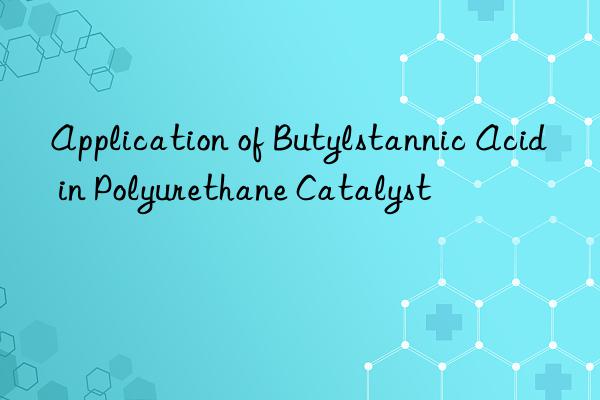
Polyurethane (PU) is a type of polymer material with a wide range of uses. Its applications cover soft foam, hard foam, elastomer, Coatings, adhesives, sealants and many other fields. The synthesis of polyurethane is mainly achieved through the reaction of isocyanate and polyol. This process usually requires a catalyst to accelerate the reaction rate and ensure the performance of the product. Butylstannic acid, as an efficient catalyst, plays a vital role in the polyurethane synthesis process.
Catalyst role in polyurethane synthesis
In the synthesis of polyurethane, the main task of the catalyst is to accelerate the reaction between the isocyanate group (NCO) and the hydroxyl group (OH). This reaction is called an addition reaction. Catalysts can significantly increase the reaction rate and shorten the production cycle. They also help control the selectivity of the reaction and the molecular structure of the product, thereby affecting the performance of polyurethane materials.
Catalytic mechanism of butylstannic acid
Butylstannic acid, chemical formula C4H10O2Sn, is an organotin compound with strong catalytic activity. In polyurethane synthesis, butylstannic acid works in the following ways:
- Promote the reaction between NCO and OH: Butylstannic acid can accelerate the reaction between isocyanate and polyol and promote the formation of polyurethane network.
- Controlling reaction kinetics: By adjusting the amount of catalyst, the reaction rate can be controlled and the molecular weight and molecular weight distribution of the product can be affected, which is crucial for adjusting the hardness, elasticity and durability of polyurethane materials.
- Improve reaction selectivity: Butylstannic acid helps control different types of reaction pathways, such as preferentially promoting chain growth reactions rather than cross-linking reactions, which is very important for adjusting the structure and properties of materials.
Application cases
In the production of polyurethane foam, butylstannic acid as a catalyst can significantly increase the foaming speed and curing speed of the foam, while ensuring the uniformity and stability of the foam. In the preparation of polyurethane coatings and sealants, the use of butylstannic acid can accelerate the curing process and improve the adhesion and weather resistance of the coating.
Safety and environmental considerations
Although butylstannic acid shows excellent catalytic performance in polyurethane synthesis, as an organotin compound, it may have adverse effects on the environment and human health. Therefore, when using butylstannic acid, safe operating procedures must be strictly followed and appropriate safety measures must be taken to reduce environmental pollution and health risks to operators.
Substitutes and Development Trends
In view of environmental protection and health issues, in recent years, researchers have been committed to developing new and more environmentally friendly polyurethane catalysts to replace traditional organic Tin catalyst. These alternatives include but are not limited to amine catalysts, metal complex catalysts, etc. They are designed to maintain or improve catalytic efficiency while reducing potential harm to the environment.
Conclusion
Butylstannic acid, as a catalyst in polyurethane synthesis, plays an important role in improving production efficiency and regulating product performance. However, its application needs to take into account economic benefits and environmental health, especially in the context of the growing global demand for green chemistry and sustainable development. Future research will focus on developing efficient, low-toxic catalysts to promote the development of the polyurethane industry in a more environmentally friendly and sustainable direction.
Extended reading:
bismuth neodecanoate/CAS 251-964-6 – Amine Catalysts (newtopchem.com)
stannous neodecanoate catalysts – Amine Catalysts (newtopchem.com)
polyurethane tertiary amine catalyst/Dabco 2039 catalyst – Amine Catalysts (newtopchem.com)
N-Methylmorpholine – morpholine



 微信扫一扫打赏
微信扫一扫打赏
